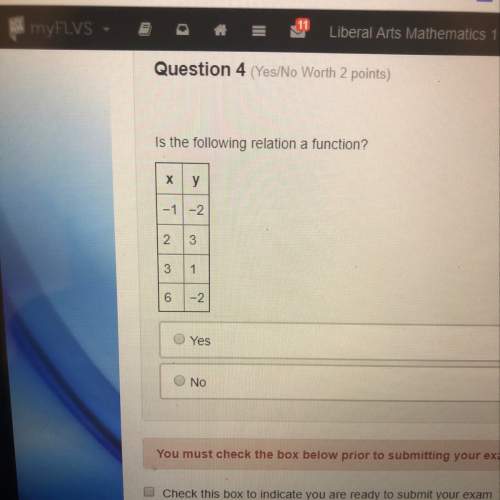
Mathematics, 30.10.2020 17:20 lizzytyler4725
Which sequence of transformations will result in a parallelogram with vertices A(−2, 1), B(−4,−3), C(2,−5), D(4,−1) being carried onto the parallelogram A’ B’ C’ D’ shown below?


Answers: 2


Another question on Mathematics

Mathematics, 21.06.2019 17:00
Benito is selecting samples of five values from the table, which row will result in the greatest mean? population data row 1 4 2 2 3 3 row 2 3 3 4 3 2 row 3 2 4 3 4 3 row 4 3 4 4 7 3 row 1 row 2 r
Answers: 3

Mathematics, 21.06.2019 19:30
Asurvey of 2,000 doctors showed that an average of 3 out of 5 doctors use brand x aspirin.how many doctors use brand x aspirin
Answers: 1

Mathematics, 22.06.2019 00:30
What is the value of the discrimination for the quadratic equation 0=×2+2+×2
Answers: 2

Mathematics, 22.06.2019 01:50
Thomas is using a drawing program to complete a construction. which construction could he be completing? two perpendicular lines are drawn. inscribing an equilateral triangle in a circle inscribing a square in a circle inscribing a regular pentagon in a circle inscribing a regular hexagon in a circle
Answers: 1
You know the right answer?
Which sequence of transformations will result in a parallelogram with vertices A(−2, 1), B(−4,−3), C...
Questions

Mathematics, 26.09.2019 08:20

Mathematics, 26.09.2019 08:20


English, 26.09.2019 08:20


History, 26.09.2019 08:20





Mathematics, 26.09.2019 08:20





History, 26.09.2019 08:20








